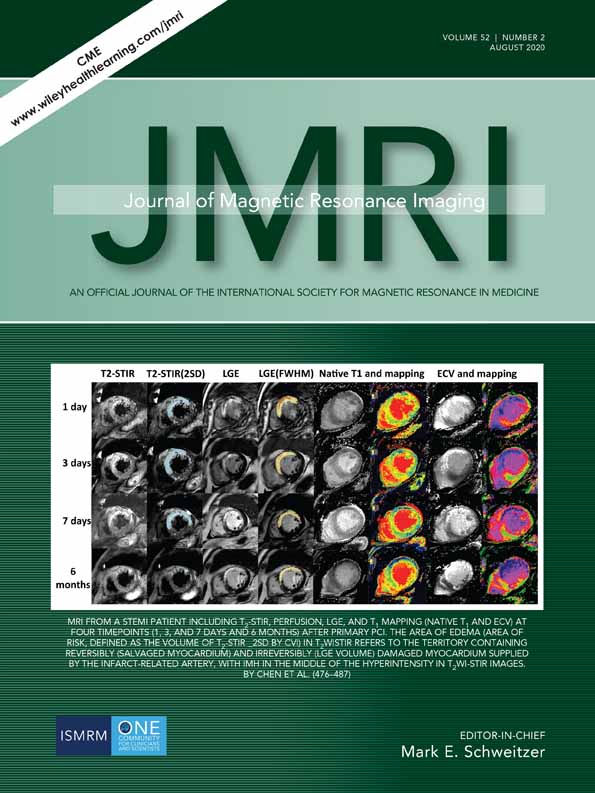Editorial
Editorial for “Decreased Native Renal T1 Up to One Week After Gadobutrol Administration in Healthy Volunteers”
First published: 17 June 2020
No abstract is available for this article.
References
- 1de Boer A, Harteveld AA, Pieters TT, et al. Decreased native renal T1 up to one week after gadobutrol administration in healthy volunteers. J Magn Reson Imaging 2020; 52: 622-631.
- 2Tweedle MF. Gadolinium deposition: Is it chelated or dissociated gadolinium? How can we tell? Magn Reson Imaging 2016; 34: 1377-1382.
- 3Lammertsma AA. Radioligand studies: Imaging and quantitative analysis. Eur Neuropsychopharmacol 2002; 12: 513-516.
- 4Staks T, Schuhmann-Giampieri G, Frenzel T, Weinmann HJ, Lange L, Platzek J. Pharmacokinetics, dose proportionality, and tolerability of gadobutrol after single intravenous injection in healthy volunteers. Invest Radiol 1994; 29(7): 709-715.
- 5Lancelot E. Revisiting the pharmacokinetic profiles of gadolinium-based contrast agents. Differences in long-term biodistribution and excretion. Invest Radiol 2016; 51: 691-700.
- 6Murata N, Murata K, Gonzalez-Cuyar LF, Maravilla KR. Gadolinium tissue deposition in brain and bone. Magn Reson Imaging 2016; 34: 1359-1365.
- 7Hirano S, Suzuki KT. Exposure, metabolism, and toxicity of rare earths and related compounds. Environ Health Perspect 1996; 104(Suppl 1): 85-95.




